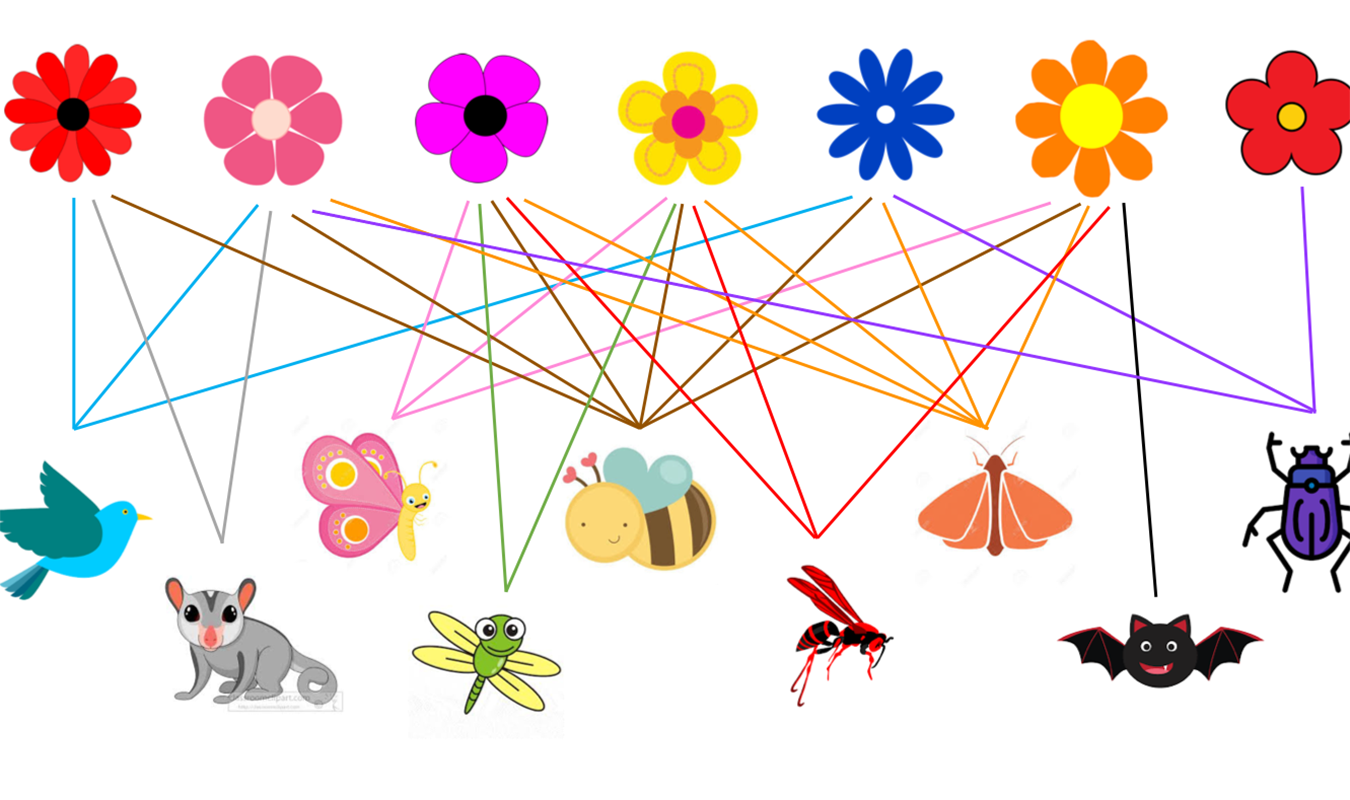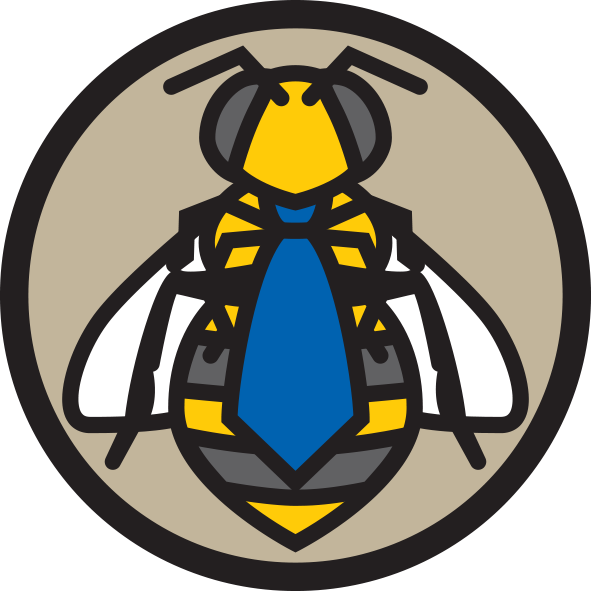
The study of pollination networks is an emerging area of research. These studies record which pollinator species forage on which plant species within an ecosystem, and then build a network of relationships between them.
Pollination networks are useful for identifying plants and pollinators that are at higher risk of extinction if their partners go extinct. They also highlight species that are important for ecosystem integrity, and are therefore of higher conservation value.
Only 15% of species are structurally important to their network. A generalist species interacts with a large number of other species. For example, honey bees are known to forage on many different plants. In contrast, a specialist species interact with only one or a few other species. For example, figs and their pollinators are 100% reliant upon each other. Generalist species, both plant and pollinator, provide redundancy in the network. Simulated removal of generalist pollinators leads to the most extreme and rapid extinction of plant species.
The honey bee usually occupies a central position in pollination networks and helps to maintain the network. On the other hand, there are concerns that honey bees disrupt interactions between plants and their native pollinators.
A general weakness of plant-pollinator network studies is that whether or not flower visits result in pollination is often not considered. It is possible for pollinators to take resources from flowers without providing pollination services. Quality studies quantify the number of pollen grains deposited by different pollinators or the number of fruit/seeds resulting from single visits by pollinators to individual flowers. This is done by excluding pollinators from flowers until after they open, allowing a single pollinator to visit the flower and then excluding all other visits. The number of pollen grains removed or deposited can then be quantified, and fruit, nut or seed set can be determined.
A second weakness is that the data collected in these studies are largely correlational. That is, the number of pollinators visiting an area are observed over a period of, usually, hours or days. Without manipulation of the study system, it is difficult to come to definitive conclusions about species interactions, because a correlation in species abundance can be interpreted in ways that can produce opposite conclusions (Paton 1999).
Hung et al. (2018) created a global dataset using 80 published plant-pollinator networks. The authors conclude that honey bees are the single most important species of pollinators across natural systems. 5% of plant species are visited exclusively by honey bees, but nearly half of all species are not visited by honey bees. Honey bees may disrupt interactions between plants and other pollinators, including when they are only modestly abundant. Honey bees do not differ from the average non-Apis mellifera pollinator in pollination effectiveness.
More information:
- How bees help plants have sex – In this video Fernanda S. Valdovinos explains how intricate pollination networks work and how it can all change from one season to the next.
Acknowledgements:
- KLJ Hung, JM Kingston, M Albrecht, DA Holway, JR Kohn (2018) The worldwide importance of honey bees as pollinators in natural habitats. Proceedings of the Royal Society of London B 285: 20172140
- DC Paton (1993) Honeybees in the Australian Environment. BioScience 43:95-103
- This article was written by Nadine Chapman and reviewed by Ben Oldroyd and Ros Gloag.

